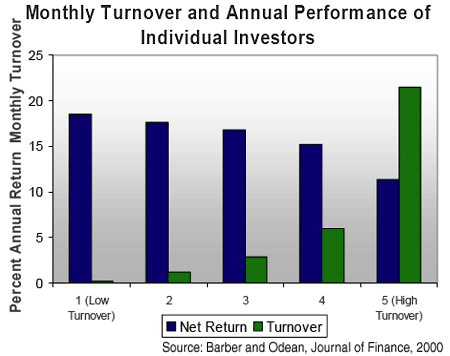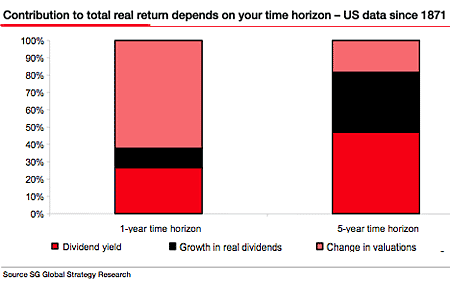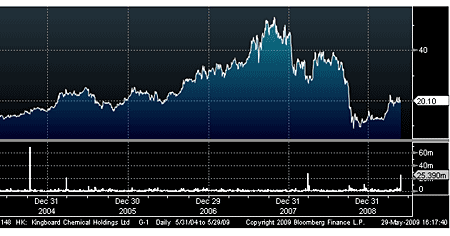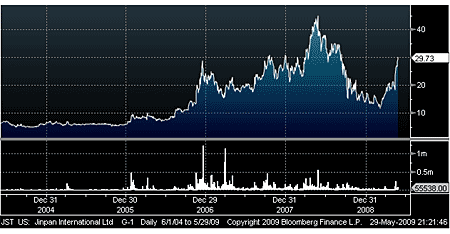How do you know when it's time to sell a stock?
Deciding when to sell your shares can be one of the biggest headaches for an investor. Decisions are often made on emotional, not logical grounds. Cris Sholto Heaton explains a few simple principles that should help you to decide, with three examples from his own stock picks.

table.ben-table table { border: 3px solid #2b1083;font: 0.928em/1.23em verdana, arial, sans-serif;}
th { background: #2b1083; padding: 10px 5px;color: white;font-weight: bold;text-align: center;border-left: 1px solid #a6a6c9;}th.first { border-left: 0; padding: 5px 2px;text-align: left;}
tr {background: #fff;}
MoneyWeek
Subscribe to MoneyWeek today and get your first six magazine issues absolutely FREE

Sign up to Money Morning
Don't miss the latest investment and personal finances news, market analysis, plus money-saving tips with our free twice-daily newsletter
Don't miss the latest investment and personal finances news, market analysis, plus money-saving tips with our free twice-daily newsletter
tr.alt {background: #f6f5f9; }
td { padding: 5px 2px;text-align: center;border-left: 1px solid #a6a6c9;color: #000;vertical-align: center;}td.alt { background-color: #f6f5f9; }
td.bold { font-weight: bold; }td.first { border-left: 0; text-align: left;}
When should you sell your shares? This is one of the biggest headaches for an investor. You can spend days or weeks deciding whether to buy, but the urge to sell often comes very suddenly.
Sometimes, a stock shows a rapid gain and a safety-first attitude kicks in: "Time to take some money off the table". At others, it's the opposite: the price slips, our paper profits evaporate and we reach for the sell button in a cold sweat.
In both cases, we're making decisions on short-term gyrations that may be totally meaningless in the long run. That means we often trade too much and at the wrong time. We cut our winners too early and hang on to our losers too long in the hope they'll turn around.
There's no easy way to decide when to sell, but here are a few things that I believe help me to make better decisions
Trading is hazardous to your wealth
The first thing to remember is that overtrading can be a very big mistake. The chart below comes from a five-year study of 60,000 American investors by Brad Barber and Terrance Odean. It makes a strong case that the most active investors are the least successful ones.

Obviously, this doesn't mean that all very active traders perform badly. But a very large study by the same researchers on day traders in Taiwan suggests that most do; more than 80% lost money over a six-month timeframe, with a small minority being consistently profitable. But the study pinpoints the two main reasons why most active sellers are likely to underperform.
The first is cost. Since you have to pay commission and often taxes whenever you buy and sell, the more you trade, the more these costs eat into your returns.
The second is poor stock selection. We tend to be seduced by hot stocks, and sell other holdings to chase them. Yet by the time an exciting story comes to our attention, it will often have risen a long way and no longer be cheap. Meanwhile, the unloved stocks we sell have often fallen as far as they are likely to. Barber and Odean found that on average, the stocks investors bought underperformed the ones they sold by -8.61% over the next two years, when sales for non-speculative reasons (such as tax) were excluded.
Dividends matter more than you think
Although it's not part of the study above, there's a third good reason for thinking that most very active investors will underperform over the long term. Their main focus is almost always on share price movements and capital gains. Yet over time, it's dividends that make up the biggest part of equity returns, as the chart below from James Montier of Socit Gnrale shows.

This makes sense when you reflect on what a share is a claim on the assets and future cashflows of a firm. In the very long run, a firm must return enough cash to shareholders, usually through dividends, to justify the cost of its shares. Of course, many growth companies pay low or no dividends when you buy them but the value of the share comes from what it will eventually pay when its high-growth days are over.
The importance of dividends is a major reason to avoid churning your portfolio, especially among income stocks. If you've managed to pick up a stock that is paying you a solid income, it will rarely be worth selling it even if you could pocket an attractive-looking short-term gain.
Is 33% worth 8% a year?
For an example, let's take a look at Kingboard Chemical Holdings, which I first mentioned in January. Kingboard makes circuit boards and materials for them. This is a cyclical, competitive industry that had been sold off heavily. But Kingboard is an established company with a decent balance sheet and a strong market position.
At the time, it traded on a dividend yield of 7-8%, but it was clear that the recession would see profits slide and that the dividend would be cut. Still, the firm looked well placed to gain market share from weaker rivals, so that once conditions improved, earnings and dividends would pick up strongly again. In short, it looked too cheap, even given the risks.
Since then, the shares have risen more than 30%, as you can see on the chart below. That's a reasonable five-month return if you were to sell now.

But would that be the right thing to do? Of course this depends on your circumstances, but for me, the answer is no. The dividend has been cut and I'd expect it to be around half its previous level throughout this year. But that doesn't seem to be a sign of weakness; instead it looks like the firm sees other opportunities for its cash. This month, it made a bid to privatise two of its Singapore-listed units at their current depressed prices, while the latest annual report states it is "actively in discussions with a few PCB [printed circuit board] manufacturers on the prospects of possible co-operation."
So for now, Kingboard is doing what I expected and should emerge from the downturn in a strong position. Once business picks up again, we can expect a dividend boost, hopefully giving investors who bought in at the lows a 7-8% yield again. It isn't worth swapping the prospect of long-term yearly payouts of that size in exchange for a 30-40% capital gain.
Be ruthless with stocks that disappoint
This doesn't mean you should never sell. Let's take a look at Ezra Holdings. I mentioned this offshore oil support services stock back in August as a way to play the need to tap deepwater fields to meet our future oil demand.
I still think deepwater oil is a good investment story, but my timing was lamentable: I picked Ezra during a) an oil bear market b) an equity bear market and c) a very severe credit crunch. Even though I had expected oil to fall to $60-$70 a barrel, sentiment was far worse than I expected. The stock plunged, as you can see on the chart below, although it has now rebounded a bit and cut the loss.

But how is the business doing? Ezra's responses to the industry slowdown look smart. It suspended the dividend to preserve cash and cut back on capital expenditure by cancelling three of five new-build multi-functional support vessels it had on order.
But last week it surprised investors by announcing a $92.4m new share placement (equal to 13.4% of its outstanding share capital). This may be because the management have seen good opportunities perhaps taking over a struggling rival or buying some distressed assets and want to have the cash to take advantage of it. Or, they may just think it prudent to pay down debt now, in case credit conditions worsen again later in the year. The capital raising should reduce gearing from 0.5 times to 0.26 times. But looking at the latest results, there's a less encouraging explanation.
Cash is king does Ezra have enough?
In the first half, operating profit before working capital changes was $49.6m, but cash from operations was just $6.6m. After tax and interest payments, net operating cash was under $0.3m. Trade receivables rose $45.6m and days of sales outstanding is up around 35% on this period last year. In short, this suggests Ezra hasn't been able to collect payment from its customers quickly enough; it ended up extending credit to them while having to pay down its own debts.
A spell like this isn't uncommon at small, fast-growing firms, but if it gets out of hand it can be a big problem. Many business fail not because they can't make sales, but because they can't manage their working capital and collect quickly enough to meet their own payments. During a recession, growing receivables become even more of a worry because of the rising risk of bad debts (most of Ezra's customers are large oil firms who should be relatively low risk, but it has some smaller clients).
Ezra's added complication is that its rapid fleet growth demands high capex: it's been investing $50-60m every six months. So if customers are slow to pay, management may well have decided that they need some extra cash on hand; the $83m the firm had at the end of February wouldn't last long at recent rates of use.
You can't draw firm conclusions from one set of results, but we have signs that cashflow is lagging behind where it should be. That's often the first sign of deeper problems in the business. I would normally monitor this type of situation for at least another quarter, but I feel that the share placement is very sudden and quite poorly explained; recent company releases had indicated it had secured all the funding it needed for its capex plans this year.
So I'm concerned that management may not be on top of things and that means getting out of the stock altogether, even though that would mean crystallising a loss of around 30% at this point. If I'm wrong, I suspect Ezra will do very well over the next few years but the downside risks are now too great.
An offer you can't refuse
Finally, a third stock: Jinpan International, a US-listed, China-based firm I first profiled back in November. It's an electrical transformer maker that I saw as a good play on both Chinese infrastructure and wind energy. Since then the stock is up almost 80%.

A fourth-quarter slowdown was followed by a good first-quarter with encouraging results in wind and non-China sales. As a small, fast-growing firm, we need to keep an eye on cash, capex and receivables (which grew rather fast last year). However, these trends now seem to be pointing in the right direction.
But good results aren't really what's driven the stock higher. Jinpan is something of a US small-cap investor favourite it's one of the American Motley Fool's four-star stocks and is suddenly getting a lot of attention.
This kind of stock is often the biggest problem when deciding whether you should sell. As a small growth company, it doesn't pay a large dividend its value comes from what it will pay in the future. But as the firm gets more attention, the share price can often be driven well above intrinsic value. Investors extrapolate recent growth rates far into the future, although studies suggest that few companies manage to produce persistent above-average growth.
In that case, the returns you can make by selling now will be greater than the returns you'd expect to get in the long run from the growth of the business and dividends so you should sell, even if you still believe the management is doing a great job. Put like that, it sounds simple, but there's an obvious catch what's the intrinsic value of a company?
Fair values - more art than science
We can try to calculate a fair value, perhaps using a dividend discount model (DDM), in which we estimate the future dividends that a firm will pay and discount them back to today (using a discount rate which includes the return we can get by investing elsewhere as well as the risk that the firm doesn't come good and pay us what we're expecting).
But that involves lots of guesswork, such as how fast the company will grow, how quickly it will ramp up dividends and what the appropriate discount rate is. Change these assumptions very slightly and you end up with drastically different answers.
Even so, I sometimes use DDMs as a thought experiment when assessing a share. Using the one below, for Jinpan, I get an estimate in the low forties for what I think are reasonably conservative assumptions (although if you try this yourself, you'll see just how big a difference the assumptions can make).
| Discount rate | 10% | Row 0 - Cell 2 | Row 0 - Cell 3 | Row 0 - Cell 4 | Row 0 - Cell 5 | Row 0 - Cell 6 | Row 0 - Cell 7 |
| Initial earnings growth 18% (top end of management guidance) and declining steadily over next five years | |||||||
| Row 2 - Cell 0 | Row 2 - Cell 1 | Row 2 - Cell 2 | Row 2 - Cell 3 | Row 2 - Cell 4 | Row 2 - Cell 5 | Row 2 - Cell 6 | Row 2 - Cell 7 |
| Year | latest results | 1 | 2 | 3 | 4 | 5 | Row 3 - Cell 7 |
| Earnings growth rate | Row 4 - Cell 1 | 0.18 | 0.16 | 0.14 | 0.12 | 0.10 | Row 4 - Cell 7 |
| EPS | 2.47 | 2.91 | 3.38 | 3.85 | 4.32 | 4.75 | Row 5 - Cell 7 |
| Dividend payout ratio | Row 6 - Cell 1 | 0.10 | 0.15 | 0.20 | 0.25 | 0.30 | Row 6 - Cell 7 |
| DPS | 0.24 | 0.29 | 0.51 | 0.77 | 1.08 | 1.42 | Row 7 - Cell 7 |
| Present value of dividends | Row 8 - Cell 1 | 0.26 | 0.42 | 0.58 | 0.74 | 0.88 | 2.88 |
| Row 9 - Cell 0 | Row 9 - Cell 1 | Row 9 - Cell 2 | Row 9 - Cell 3 | Row 9 - Cell 4 | Row 9 - Cell 5 | Row 9 - Cell 6 | Row 9 - Cell 7 |
| Long-term growth rate of Chinese economy (and Jinpan's earnings) from year 6 | 8.00% | Row 10 - Cell 2 | |||||
| Value of dividends from year 6 onwards | Row 11 - Cell 1 | 71.23 | (Gordon constant growth model) | ||||
| Discounted back to present | Row 12 - Cell 1 | 40.21 | Row 12 - Cell 3 | Row 12 - Cell 4 | Row 12 - Cell 5 | Row 12 - Cell 6 | Row 12 - Cell 7 |
| Total value of dividend in present terms | Row 13 - Cell 1 | 40.21 | + | 2.88 | = | 43.09 | Row 13 - Cell 7 |
Alternatively, measures like price/earnings ratios are much quicker and often give similar results (bearing in mind that any 'fair value' must be a very rough indication). For a low-dividend stock expecting a few years of mid-teens earnings growth, a p/e of around 15 times trailing earnings is my crude rule of thumb to avoid overpaying for growth. That would put Jinpan on a price in the high thirties.
I have to stress that this is not a forecast or a target; rather I'm trying to think about what could be reasonable value and what would be excessive. In my view, it's not hard to justify a $40 price for Jinpan, whereas a $50-$60 one needs much more optimistic assumptions. (This doesn't mean I'd be prepared to buy a stock in this position at $40 given all the uncertainty involved in investing, I aim to buy way below the fair value area, to give myself a big margin of safety.)
Based on this, I don't think that Jinpan has gone high enough to sell yet, despite the attractive paper profit. But if we get a bigger jump which is likely as the story begins to spread I'd think about taking profits. Not for a few dollars extra; I want to minimise churn and I always plan to hold on to companies that are performing well for the long term. But if someone offers me a big enough premium, I'd be wrong not to take it.
In other news this week
| China (CSI 300) | 2,760 | +0.7% |
| Hong Kong (Hang Seng) | 18,171 | +6.5% |
| India (Sensex) | 14,625 | +5.3% |
| Indonesia (JCI) | 1,917 | +1.9% |
| Japan (Topix) | 898 | +2.5% |
| Malaysia (KLCI) | 1,044 | -0.1% |
| Philippines (PSEi) | 2,389 | +3.1% |
| Singapore (Straits Times) | 2,329 | +3.7% |
| South Korea (KOSPI) | 1,396 | -0.6% |
| Taiwan (Taiex) | 6,890 | +2.3% |
| Thailand (SET) | 560 | +1.2% |
| Vietnam (VN Index) | 412 | +1.7% |
| MSCI Asia | 93 | +2.6% |
| MSCI Asia ex-Japan | 389 | +3.7% |
North Korea unexpectedly carried out a weapon nuclear test and several missile launches, for reasons that remain unclear. Defence analysts suggested it may signal a power struggle in Pyongyang over who will succeed 'Dear Leader' Kim Jong-Il, who is believed to be in poor health.
India's economy is estimated to have grown 5.8% year-on-year in the first quarter of 2009, significantly higher than expected. Past numbers were substantially revised; growth in Q4 2008 is also now calculated as 5.8% yoy, from 5.3% yoy initially, while the slowdown is now thought to have started earlier in Q4 2007. This suggests that the economy may be holding up better than expected, although further revisions are likely and more timely data has been painting a mixed picture.
In corporate news, three private equity firms Bain, KKR and Warburg Pincus - are reported to be competing to take a 20% stake in Gome, China's second-largest electronics retailer, for $500m. Shares in the Hong Kong-listed firm have been suspended since its founder Huang Guangyu was arrested over unspecified charges of financial wrongdoing in November. And Indian telecoms firm Bharti Airtel tried to resurrect its planned tie-up with South Africa's MTN; negotiations originally fell apart last summer. A complex proposed deal would leave Bharti owning 49% of MTN and MTN holding 25% of Bharti.
Get the latest financial news, insights and expert analysis from our award-winning MoneyWeek team, to help you understand what really matters when it comes to your finances.
Cris Sholto Heaton is an investment analyst and writer who has been contributing to MoneyWeek since 2006 and was managing editor of the magazine between 2016 and 2018. He is especially interested in international investing, believing many investors still focus too much on their home markets and that it pays to take advantage of all the opportunities the world offers. He often writes about Asian equities, international income and global asset allocation.
Cris began his career in financial services consultancy at PwC and Lane Clark & Peacock, before an abrupt change of direction into oil, gas and energy at Petroleum Economist and Platts and subsequently into investment research and writing. In addition to his articles for MoneyWeek, he also works with a number of asset managers, consultancies and financial information providers.
He holds the Chartered Financial Analyst designation and the Investment Management Certificate, as well as degrees in finance and mathematics. He has also studied acting, film-making and photography, and strongly suspects that an awareness of what makes a compelling story is just as important for understanding markets as any amount of qualifications.
-
 In the money: how my trading tips fared in 2025
In the money: how my trading tips fared in 2025The success of the open positions offset losses on closed ones, says Matthew Partridge
-
 Vietnamese stocks are charging ahead – here's what to buy
Vietnamese stocks are charging ahead – here's what to buyVietnam has been upgraded from a frontier to an emerging market. It remains a promising pick, says David Prosser
